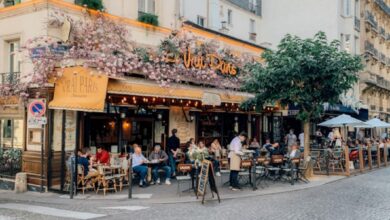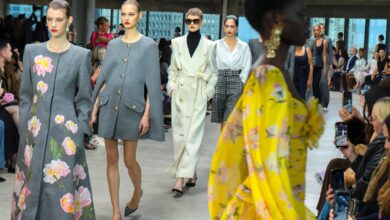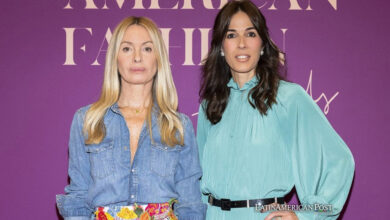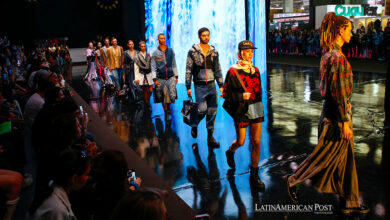
Fashion is a changing and vibrant way for people to express themselves regardless of their temporal backgrounds. It serves as a tool for individuals to showcase their uniqueness, artistic flair and personal values.
Within this guide we will embark on an exploration of the fascinating realm of fashion delving into its rich historical roots, global impact, renowned personalities, environmental sustainability efforts and the exciting prospects that lie ahead for the world of style.
The Role of Fashion in Self-Expression and Culture
Fashion goes beyond clothing; it serves as a means of self-expression and mirrors the essence of our culture. You might also associate this as the attributes of Everygame mobile casino too. The decisions we make regarding attire and personal style reveal a deal, about our individuality, ambitions and the societal standards that shape us.
1. The Evolution of Fashion
The world of fashion holds a diverse past that stretches across centuries reflecting changes, in culture, society and technology. From the clothing of civilizations to fashion trends garments have evolved alongside our changing world.
Throughout this history visionary designers and artistic movements have played a role in shaping the fashion landscape. Icons like Coco Chanel and Christian Dior as groundbreaking movements like Bohemian style have made enduring marks on the industry. Their innovative designs and pushing creations have redefined what is possible, in fashion leaving behind legacies that continue to inspire today’s designers and enthusiasts
2. Fashion Capitals: Global Hubs of Style
Paris has always been recognized as the hub of fashion renowned for its elegance, opulence and high-end fashion creations. It serves as the headquarters, for fashion houses such as Chanel, Louis Vuitton and Dior.
Milan effortlessly combines a heritage of craftsmanship with cutting edge design. It is widely celebrated for its to wear collections and stands tall as the birthplace of renowned brands like Prada and Gucci.
New York City is an amalgamation of cultures and its fashion scene beautifully mirrors this diversity. The city hosts fashion weeks. Has gained a reputation for nurturing emerging talent while embracing unique street style trends.
London serves as a breeding ground for fashion constantly pushing boundaries through experimentation and innovation. It proudly claims fame as the birthplace of designers such, as Alexander McQueen and Vivienne Westwood.
3. The Fashion Industry: An Intricate Web
Fashion Weeks, which take place in cities worldwide are dazzling exhibitions that showcase the collections from top designers. These events not reveal cutting edge trends. Also attract professionals and passionate fashion enthusiasts playing a significant role, in shaping the future of style.
Beneath the glitz and glamour lies the intricate network of the fashion industry encompassing aspects such as design and creativity supply chain management, retail operations, marketing strategies and e commerce. Navigating this multifaceted terrain is crucial for fashion businesses aiming to thrive in an evolving and highly competitive marketplace. Achieving success, in the fashion industry relies on coordinating these elements into a seamless whole.
4. Sustainable Fashion: A Contemporary Imperative
The environmental impact of fashion is significant characterized by waste, pollution and depletion of resources. Sustainable fashion aims to mitigate these consequences by adopting eco practices and emphasizing responsible sourcing and production.
At the time ethical fashion promotes principles such, as labor practices, workers’ rights and transparency, throughout the supply chain. Sustainable brands are dedicated to reducing their footprint by prioritizing the use of eco materials embracing ethical production methods and actively participating in recycling initiatives. By upholding these values, the fashion industry is progressing towards an sustainable future that considers both the wellbeing of our planet and the ethical treatment of individuals involved in the production process.
5. Fashion Icons: Influential Figures in Style
The world of fashion is rich, with designers who have made contributions that still shape the industry today. Legends like Yves Saint Laurent, Karl Lagerfeld and Jean Paul Gaultier have left a mark revolutionizing fashion and becoming enduring sources of inspiration for designers.
In addition to these established icons the fashion landscape has also embraced a generation of trailblazers such as Rihanna, Pharrell Williams and Zendaya. These individuals have redefined fashion by challenging gender norms celebrating diversity and pushing the boundaries of style. Their influence extends beyond the runway as they utilize their platforms to promote inclusivity and foster innovation, in the evolving world of fashion.
6. Fashion Through the Ages: Decades of Style
In the 1920s there was a rise, in flapper fashion which was known for its drop waist dresses, bobbed hair and a carefree attitude that challenged norms.
Moving on to the 1960s we witnessed the emergence of counterculture and various fashion movements like mod, hippie and psychedelic styles. These styles represented rebellion and the pursuit of freedom.
As, for the 1980s they were marked by extravagant fashion trends. Power suits, neon colors and the rise of punk and glam rock aesthetics became prominent during this era.
7. Wardrobe Essentials: Building a Timeless Collection
The little black dress, by Coco Chanel is a wardrobe essential that never goes out of style. It can be worn for any occasion. Represents sophistication.
The timeless charm and practicality of the trench coat make it a stylish addition to any outfit.
A white button-down shirt is a clothing item that can be worn in both formal settings. It’s a staple piece, in every wardrobe.
8. Trends in Fashion: The Art of Forecasting
Fashion trends are born out of a combination of influences, consumer habits, fashion shows and street style. Predicting trends plays a role, in the fashion industry. Agencies and experts specializing in fashion forecasting use data analysis, cultural changes and the work of, up-and-coming designers to guide the industry’s path.
9. High Fashion vs. Street Style: A Cultural Divide
High fashion couture symbolizes the level of skill in the fashion industry showcasing carefully constructed clothing that pushes the limits of creativity. On the hand street style embraces individuality and self-expression often inspiring fashion designers with its varied and diverse aesthetics.
10. The Future of Fashion: Technology and Innovation
The world of fashion is experiencing a blend of the virtual realms showcasing virtual fashion shows and introducing digital garments. Moreover, non-fungible tokens (NFTs) are making their mark in the fashion industry. Fashion is being transformed by advancements in 3D printing and sustainable fabric production leading to waste personalized clothing options and the use of environmentally friendly materials.
Conclusion
Fashion is an evolving art form that reflects the spirit of the times. It plays a role, in shaping culture empowering individuals to express themselves and mirroring society’s values and aspirations.
Fashion embraces diversity, uniqueness and imagination. In a world where personal style knows no limits, fashion becomes a medium through which we can showcase ourselves, challenge norms and embrace the ever-changing landscape of style. As fashion progresses so does our understanding of identity and culture making it an essential and enduring means of expression.
Author: Santiago Siksnys




